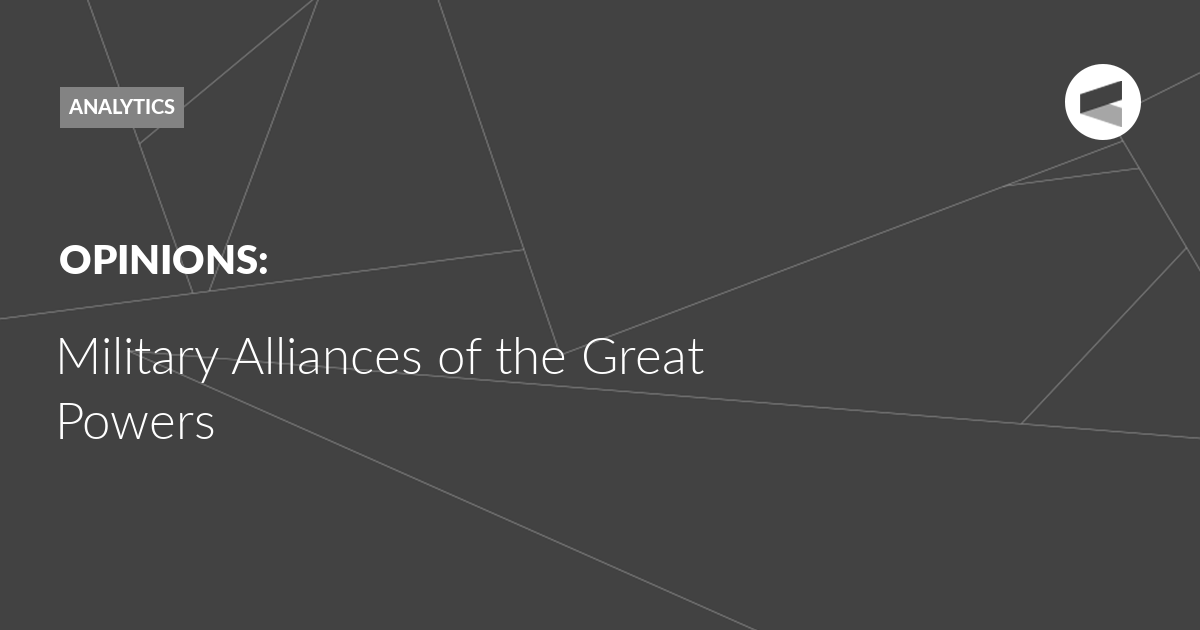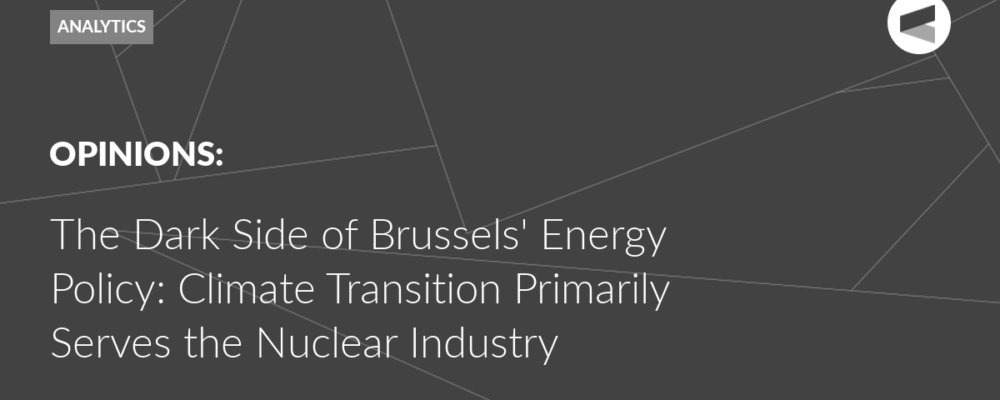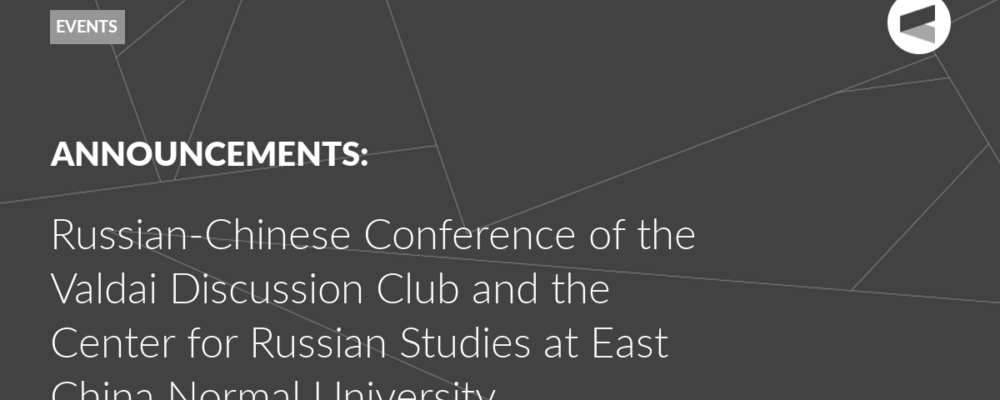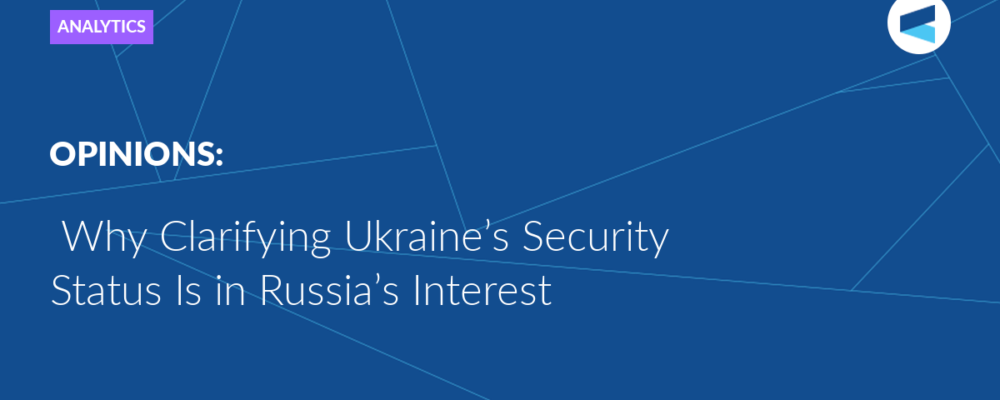The world has been and continues to be driven by three famous elements of Realism; “self-help, statism, and survival,” writes Major General (Retd) Raza Muhammad, President of the Islamabad Policy Research Institute.
Historical Background
For centuries, military alliances have remained a fundamental aspect of statecraft and international relations. The rise of collective security in the face of the larger powers in ancient Greece formed the bedrock of military alliances and security pacts. The earliest documented examples of formal military alliances are those of Sparta against Athenian military might during the Peloponnesian Wars. However, the majority of historical military alliances were defensive in nature; i.e., formed to deter a common enemy with greater military might in order to ensure one’s own survival.
In the post-Westphalian era, kingdoms evolved into to independent nation states. The new security architecture hence became state-centric. Consequently, the formation of well-structured, treaty-based military alliances became the norm. The 19th and 20th century alliances, such as the Triple Alliances, Axis Powers and Allied Powers paved the way for more powerful and effective post-World War II military alliances, like the North Atlantic Treaty Organisation (NATO) and Warsaw Pact. The International Security Assistance Force (ISAF), comprising 42 countries, was established to invade Afghanistan after 9/11. Later, multiple smaller alliances were crafted to invade Iraq and Syria, etc. The ongoing Hamas-Israel conflict in Palestine also has multiple countries supporting one side or the other. Economic, military and technological sanctions are also seen as a collective punitive approach and means to attain strategic ends through coercion.
The study of military alliances has remained a fundamental part of International Relations scholarship. Scholars have often debated the nature, importance, and geopolitical and geoeconomic impact of formal military alliances on great powers contestation.
Significance, Role, Cost and Benefit of Military Alliances
Alliances have remained central to power politics; they play a crucial part in maintaining peace and security. They act as a deterrence and disincentivise war. However, alliances were and are also forged to meet the alliance’s shared military-political ends by waging war against adversarial powers. States join the military alliances for diverse objectives. Stronger states, like the United States (US) often make military alliances part of their strategy of “forward defence”. The smaller states however, often join the military alliances to augment their defensive capabilities and gain economic benefits.
Notwithstanding their advantages for collective security and deterrence against potential aggressors, military alliances also come with attendant consequences. Free riding, entrapment and abandonment are three major costs that the alliances often entail.
Free riding remained a central theme during Trump’s presidency. He often blamed allies for falling short with regards to the expected burden sharing. As Trump is campaigning for a second term in the White House, debates have already been had about the survivability of NATO.
Impact of NATO and Warsaw Pact
Two geostrategic events vividly mark the decreasing and increasing efficacy of military alliances. The fall of the Soviet Union in 1991 was seen as reducing the utility of military alliance among nations, as the threat spectrum shifted from inter-state wars to intra-state conflicts. However, the Russia-Ukraine conflict revitalised the debate revolving around the cost and benefit of military alliances. The echoes of Cold War 2.0, have made military alliances in vogue again. However, these alliances are and shall be visibly buttressed by economic alliances.
Military alliances significantly shape geopolitics, and bring increased tensions between rival blocs or states in their wake. The most aptly documented military alliances were the alliances during the two world wars, i.e., the Triple Entente, Allied Powers and Axis Powers. Cold War 1.0 also resulted in the formation of two opposing military alliances, i.e., the North Atlantic Treaty Organisation (NATO) and Warsaw Pact. Both alliances exemplified the division of the world into two opposing camps, fighting for global supremacy. The positive aspect of Cold War 1.0 was the continuous engagement between Moscow and Washington to control escalation, especially with respect to the nuclear domain.
The end of Cold War 1.0 witnessed the end of the Warsaw Pact. Prominent IR scholars like John Mearsheimer envisaged the end of NATO as well. But fast forward to 2024, and NATO not only continues to exist but is expanding beyond its original scope. This engenders a security dilemma for non-NATO states. Such a provocative scenario induces a strategic imbalance that could lead to an arms race. It could also result in pre-emptive military manoeuvres by states that may apprehend offensive activity, like the Russian attack on Ukraine.
Contemporary Environment and Military Alliances
The conflict in Ukraine has ushered in a return of power politics. IR scholarship remains divided over the causes which led to this conflict. Russia may claim it was an act of proactive and pre-emptive self-defence against NATO’s possible expansion to its borders. Ukraine, the US and allies portray it as an aggressive move to occupy Ukrainian territory. However, John Mearsheimer has debunked this myth, calling NATO’s expansion the root cause of the Russo-Ukraine conflict.
The most important consequence of this confrontation has been the multiple default advantages for the US and allies. NATO and the EU have been rejuvenated. The conflict has provided new life to NATO after it hit a low during Trump’s presidency. It has resulted in added intra-alliance cohesion and renewed commitments under Article 5 of NATO’s collective defence architecture. This commitment has been accompanied by increased defence budgets among the NATO partners. The US has urged NATO members to spend 2 percent of their GDP on defence.
The US military industrial complex in particular, and in the world as a whole are thriving. The confrontation economy has attained strange dimensions. The Nord 1 pipeline has been damaged and Nord 2 has not been allowed to commence its gas supply, allowing the US to replace Russia as the largest gas supplier to the EU. Despite combat, Russian gas flows through Ukraine and Kiev collects royalties. The food and grain supply from Russia and Ukraine are not much affected. US sanctions on Russia are blatantly abrogated by many countries, indicating receding US coercive power as well as a compromise for strategic interests. The US sanctions on Russia, Iran and North Korea have not been able to facilitate the desired outcomes.
Furthermore, the Russia-Ukraine conflict has provided NATO with the rationale to portray Russia as an aggressor and persuade neutral states like Sweden and Finland to join the alliance. Despite the growing alarm over NATO’s expansion and its latent negative consequences for global stability and an amplified security dilemma for Russia, the alliance is broaching the idea of expanding to Asia to counter China. NATO has already enhanced its support to Ukraine by providing military aid, despite the fact that the country is not part of NATO. Additionally, the US maintains security partnerships like QUAD (US, Australia, India and Japan), Squad, I2U2 and AUKUS to further expand its military footprint in Asia, specifically the Asia-Pacific region.
Under AUKUS, Australia is getting nuclear submarines to counter growing Chinese influence in the region. This has sparked fears of direct confrontation. It will also result in disturbing the balance of power in the Asia-Pacific region. This development was not welcome by France as it has derailed the agreed-upon sale of nuclear submarines to Australia.
Russia also maintains a security arrangement known as Collective Security Treaty Organisation (CSTO). CSTO members continue to support Russia, however, the arrangement remains weak due to internal challenges. CSTO’s cautious response to Nagorno-Karabakh also highlighted intra-organisation complexities and limitations.
Aside from formal military alliances, Russia is part of the Shanghai Cooperation Organisation (SCO) and BRICS (Brazil, Russia, India, China and South Africa). Although these are economic alliances, they help enhance Russian diplomatic leverage, augment its stature and help it attain its geopolitical and geoeconomic interests. Russia can also leverage these to circumvent US sanctions and efforts to isolate it.
The US-China competition has pushed the world back into a Cold War 1.0-like situation that revolves around bloc politics. While most of the smaller states are hedging in joining one bloc or the other, the major powers like the US continue to induce them by offering security guarantees through formal military alliances, economic help, diplomatic pressures, coercion through sanctions, etc. Several states like India are accruing unprecedented military and economic advantages by aligning with the US in its bid to counter the rise of China, which is seen as a challenger to the global status of the US as a predominant power. Contrarily, Beijing has opted for economic cooperation as a means to enhance its influence.
China and Formal Military Alliances
China remains on the opposite side of the military alliances’ spectrum. It does not maintain any formal military alliances and isn’t part of any. China’s aversion to forging formal military alliances is rooted in the country’s historical experience, Chinese strategic culture, and aspirations woven around trade, connectivity and mutually beneficial economic cooperation. China sees the Western military alliances as tools of intervention and an effort to cement strategic control.
From a strategic perspective, any formal military alliance with other states would put binding commitments of collective defence / offense on China, thereby limiting its freedom of action. It could also serve as entrapment in unwanted global conflicts which may not serve China’s national interests or aspirations. [ Resnick and Sworn, “China and the Alliance Allergy of Rising Powers.”
The recently-held 70th Anniversary of China’s Five Principles of Peaceful Coexistence also delineates China’s strategic culture of avoiding military confrontation and engaging through dialogue and diplomacy. Projects like the Belt and Road Initiative (BRI) and China-Pakistan Economic Corridor (CPEC) testify to tge Chinese vision of engagement based on shared socioeconomic development, which they commonly refer to as win-win cooperation.
China prefers less stringent partnerships and strategic engagements that allow it to manoeuvre in the foreign policy landscape without constraints. This approach also affords China greater flexibility and wider domains to engage with partner countries, adapting to the dynamic global geopolitical environment. By avoiding formal military alliances, China can project itself as a benign great power.
Conclusion
While global geopolitics has undergone a massive transformation since the end of Cold War 1.0, the importance of formal military alliances remains central to the US and its allies. The expansion and strengthening of NATO and the formation of AUKUS, I2U2, QUAD, Squad etc manifest the same thought process and strategy. Contrarily, the BRICS, BRI and SCO underscore the broader engagement preferences of Russia, China and 150-plus BRI partner countries.
Russia and China are gradually growing closer due to a commonality of interests. While both are unanimous in their view of the unilateralist and coercive American approach, they have avoided entering into a military alliance.
Engagements based on economic cooperation remain the mainstay of Chinese foreign policy. These help portray China as a promoter of willing cooperation knit around socio-economic development. This approach also challenges the logic, efficacy and benefits of military alliances that have caused devastation through wars.
The fact, however, remains that the world has been and continues to be driven by three famous elements of Realism; “self-help, statism, and survival”.
The Valdai Discussion Club was established in 2004. It is named after Lake Valdai, which is located close to Veliky Novgorod, where the Club’s first meeting took place.
Please visit the firm link to site






